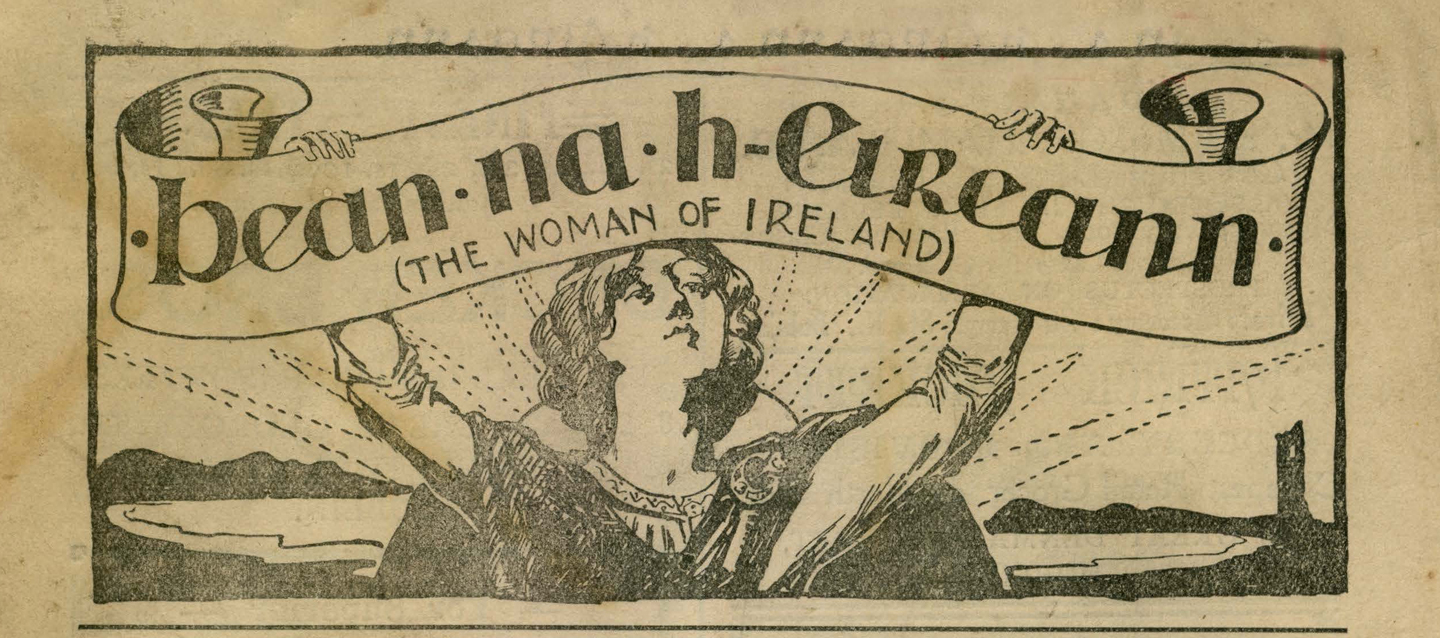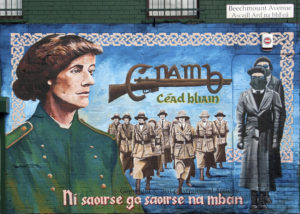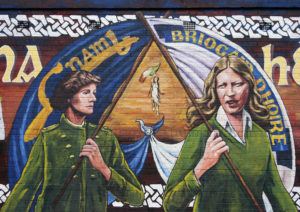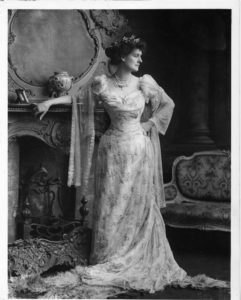
Countess Constance de Markievicz was born in London in 1868 and raised in Sligo, Ireland. As the daughter of a wealthy family from London, Constance lived a comfortable childhood. She and her sisters were taught at home to read, write, play music and create art which are luxuries that many people in Ireland could not afford. Her education would be the key that unlocked the tightly shut doors of male-dominated discussions about suffrage and independence.
Constance spent her summers in Lissadell County learning to ride horses and shoot guns; skills that would be applied decades later. Her love of action and access to the world as an artist and aristocrat would lead her into the world of political activism.
During the Rising, Markievicz held the rank of Staff Lieutenant in the Irish Republican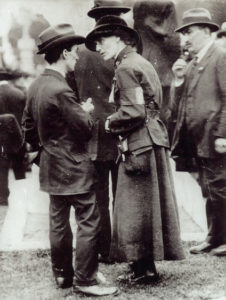 Army (IRA) and served as second in command to Michael Mallin both at St. Stephen’s Green as well as the College of Surgeons. She famously handed Margaret Skinnider a rifle at the College and promoted her to a sniper, dressing her similarly in the green women’s uniform.
Army (IRA) and served as second in command to Michael Mallin both at St. Stephen’s Green as well as the College of Surgeons. She famously handed Margaret Skinnider a rifle at the College and promoted her to a sniper, dressing her similarly in the green women’s uniform.
Her unwearied efforts to support a free, independent Ireland where women shared equal rights was progressive and irreplaceable. She was a member of the Irish Citizen Army and served as the “ghost” to James Connolly, standing quietly behind him with all of the knowledge necessary to carry on his work should Connolly be arrested or killed.
“Arm yourselves with weapons to fight your nation’s cause. Arm your souls with noble and free ideas. Arm your minds with the histories and memories of your country and her martyrs, her language and a knowledge of her arts, and her industries”
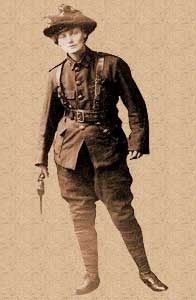 In an account from the book titled, “The Rebel Countess: The Life and Time of Countess Constance Markievicz”, Margaret Skinnider saw Constance’s encounter with some British soldiers in the street during the Rising. Accompanied by William Partridge, “she raised her rifle, took aim and fired into the group.”
In an account from the book titled, “The Rebel Countess: The Life and Time of Countess Constance Markievicz”, Margaret Skinnider saw Constance’s encounter with some British soldiers in the street during the Rising. Accompanied by William Partridge, “she raised her rifle, took aim and fired into the group.”
On Sunday, April 30, 1916, Markievicz marched to the front of the College of Surgeons to meet with Captain de Courcy Wheeler of the King’s Royal Rifle Corps to negotiate the surrender. She “reverently kissed” her revolver and subsequently marched with her men to Dublin Castle.
In 1908, she joined the Sinn Fein (an independent republican parliament in Dublin) as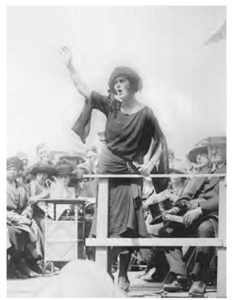 well as the nationalist Inghinidhe na Eireann (Daughters of Ireland). She was arrested in 1918 and sent to Holloway Jail in England where she campaigned as a constituency for Sinn Fein.
well as the nationalist Inghinidhe na Eireann (Daughters of Ireland). She was arrested in 1918 and sent to Holloway Jail in England where she campaigned as a constituency for Sinn Fein.
In 1919 she was the first woman in Western Europe to be elected into a cabinet position as the minister of labor. She was the last of the four women to be released from Holloway in March 1919, but was arrested again by the British army under allegations that her creation of the Fianna na Eireann was a secret conspiracy. She was sentenced to four months of hard labor in Cork and then sent to Mountjoy Prison until 1921.
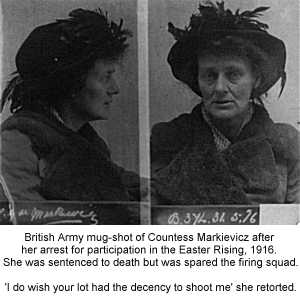
Significance of Constance de Markievicz
Throughout her active life, Countess Constance de Markievicz was an important feminist and nationalist icon in Irish revolutionary history. With her willingness and insistence to bear arms, she was an emulative figure to both women of her time during the Rising, as well as women who would continue to the fight for women’s suffrage and gender equality. In her own words,
“The things that are seen become temporal and the things that are unseen, eternal.”
Her actions over the course of her lifetime were temporal, but the memory of her actions and the implications of her work are long-lasting.
The rise of Markievicz, like other female Irish nationalists, prompts us question what made her such an iconic figure for both the suffragist movement and physical force nationalism. The child of an ascendancy family from London, a land-owning family, she benefited from her comfortable lifestyle and Parisian art school education. As an upper-class woman,
“She was a member of the very class of people she looked to destroy.” (Van Voris)
Another important question to ask is how Markeivicz’s occasional inclusion in the front lines of physical force nationalism, and the figure of her as a gun-toting uniformed woman, plays into larger tropes about masculinity. Was she emulated because she imitated masculinity and the ideal image of a revolutionary? She fought on St. Stevens Green alongside men on the front lines with the title of Staff Lieutenant, and although she was a part of the space, her womanhood represented a challenge.
 It begs us to ask if she was viewed as important in the way that she represented a masculine ideal, and her high social class most likely played a role in her privilege in being able to enter this space. After all, McDiarmid describes the Rising as a space in which men dominated and women wanted to enter, and women seldom had the opportunity to fight along men— Markeivicz, as a high-class woman, had the cushion to be able to enter such an exclusionary space.
It begs us to ask if she was viewed as important in the way that she represented a masculine ideal, and her high social class most likely played a role in her privilege in being able to enter this space. After all, McDiarmid describes the Rising as a space in which men dominated and women wanted to enter, and women seldom had the opportunity to fight along men— Markeivicz, as a high-class woman, had the cushion to be able to enter such an exclusionary space.

